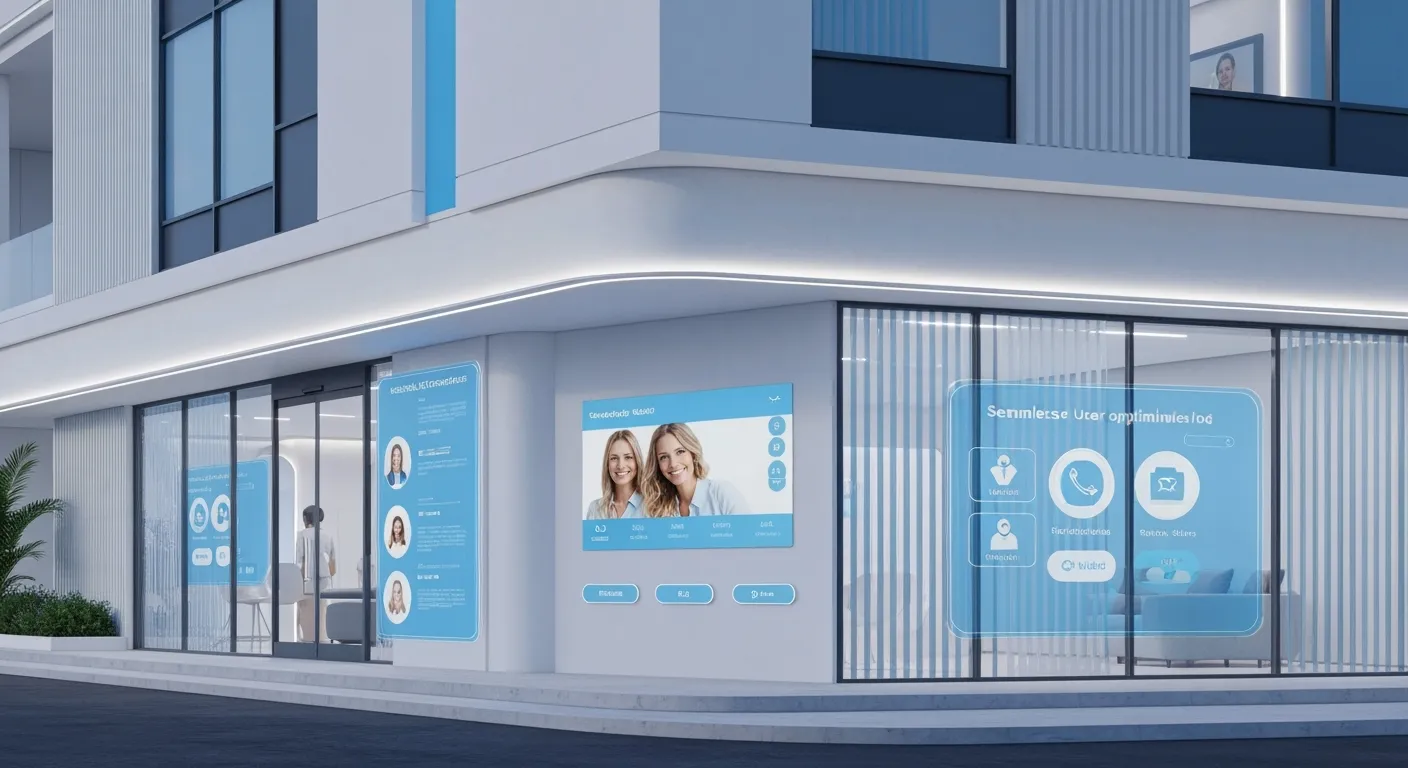Introduction to ROI in Healthcare Digital Marketing
In the ever-evolving healthcare landscape, digital marketing plays a pivotal role in reaching and engaging patients effectively. However, healthcare providers face unique challenges in measuring the return on investment (ROI) due to complex patient journeys, privacy regulations, and fragmented data systems. Understanding and tracking ROI is vital for healthcare marketers to optimize campaigns, justify budgets, and ultimately improve patient acquisition and outcomes. This article explores key metrics, tools, and strategies to accurately assess ROI in digital marketing for healthcare providers, enabling data-driven decision-making and enhanced marketing effectiveness.
Key Metrics for Measuring ROI in Healthcare Digital Marketing
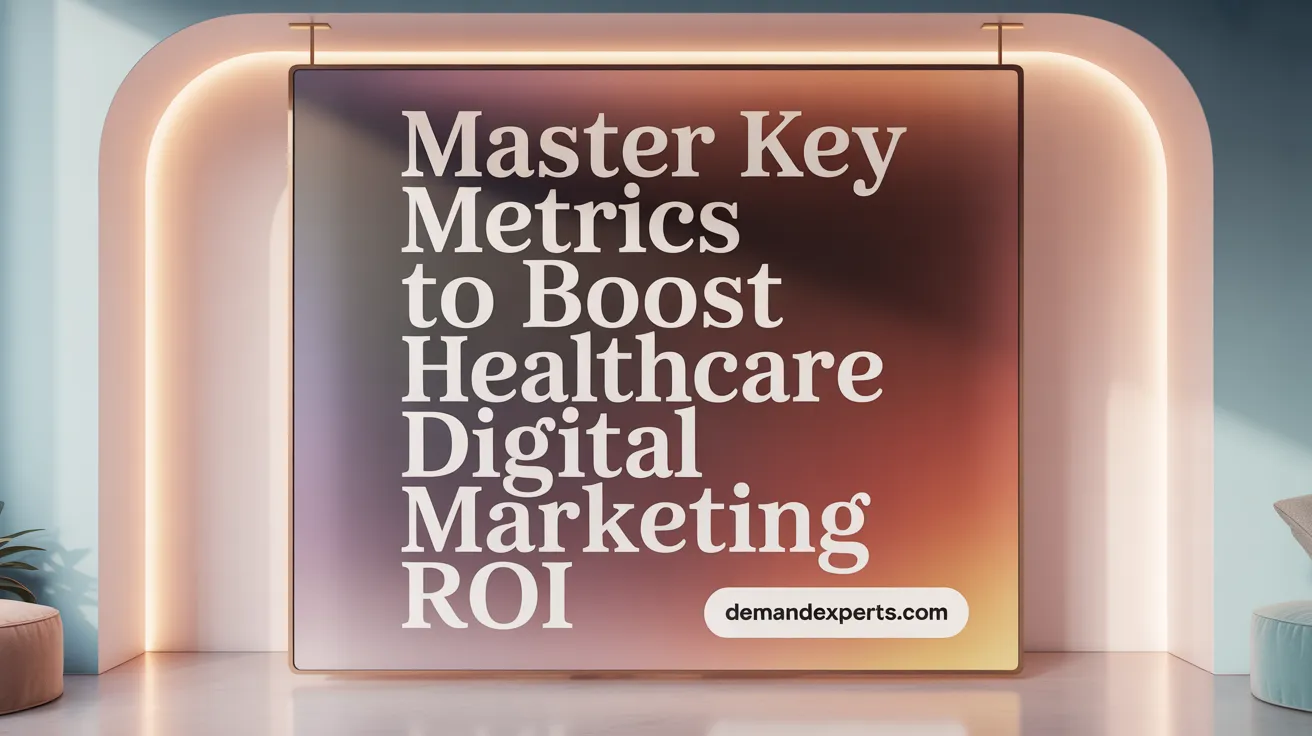
What are the essential metrics for tracking ROI in healthcare digital marketing?
Tracking ROI in healthcare digital marketing relies on several critical metrics that together provide a comprehensive view of campaign effectiveness and profitability. First, audience quality assessment ensures that marketing campaigns target individuals most likely to engage meaningfully—potential patients or members who will take action on healthcare services.
Next, lead generation and funnel tracking monitor the volume of leads generated and their movement through various stages of the patient journey. This helps identify which channels are most productive for generating initial contacts and eventual conversions.
Conversion rate analysis measures the percentage of targeted patients who complete desired actions such as scheduling appointments or registering for webinars. Higher conversion rates directly indicate marketing success.
Breaking down acquisition costs (Cost Per Acquisition or CPA) by channel and campaign enables marketers to evaluate cost efficiency. Tools like healthcare CRM systems assist in attributing success accurately across complex, multi-channel patient journeys.
Monitoring consumer engagement indicators—including clicks, shares, comments, and phone calls—provides insight into how patients interact with marketing content. High engagement often correlates with better retention and increased lifetime patient value.
Contribution margin, calculated as revenue minus variable costs, reveals the profitability of marketing initiatives. This metric helps organizations decide which campaigns to continue or modify.
Lastly, understanding the payer mix is essential; campaigns focused on patients with commercial insurance typically realize higher ROI compared to those mainly serving Medicare or Medicaid populations due to reimbursement differences.
Together, these metrics form a robust framework for evaluating healthcare digital marketing performance and maximizing return on investment.
Data Integration and Overcoming Privacy Barriers in ROI Measurement
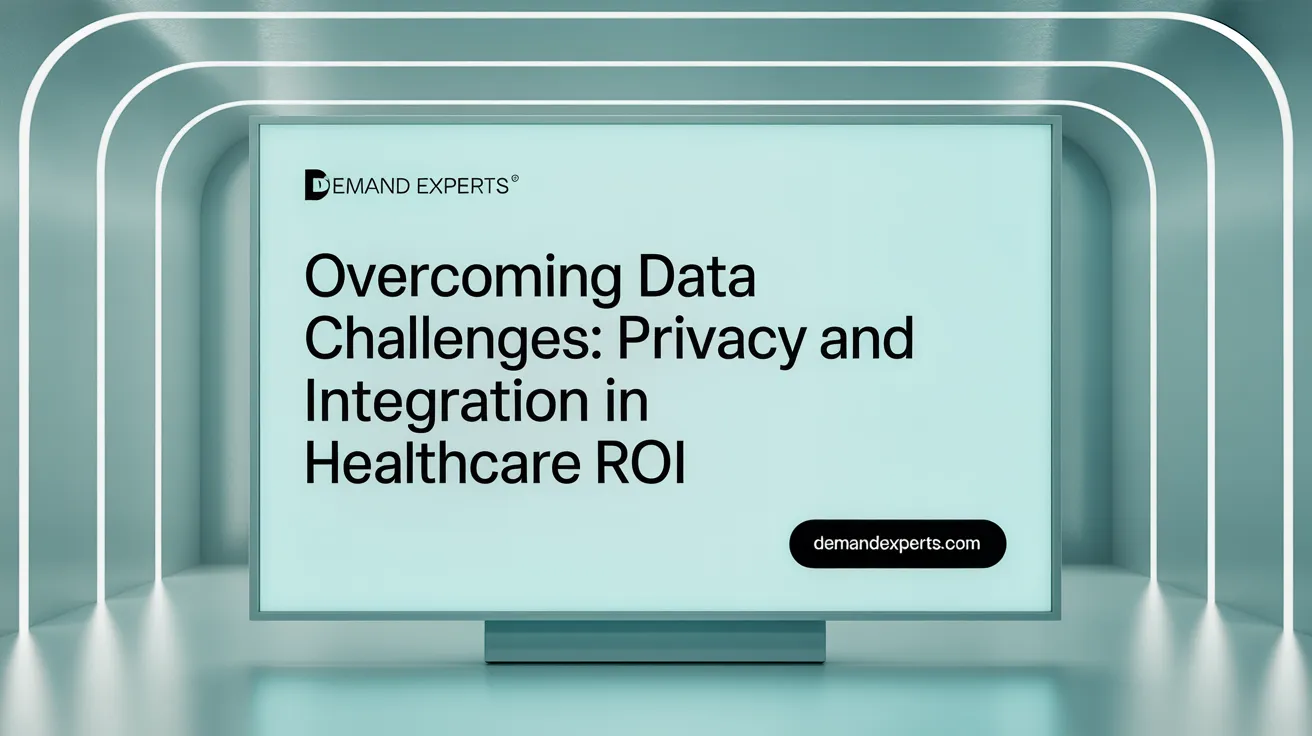
How do privacy regulations and data fragmentation affect ROI tracking in healthcare marketing?
Privacy regulations, particularly HIPAA and patient data privacy, pose significant challenges for healthcare marketing ROI measurement by restricting access to patient data. This regulation-induced limitation leads to fragmented data scattered across Electronic Health Records (EHRs), Customer Relationship Management (CRM) systems, and marketing platforms. Due to these silos, healthcare marketers lack a unified view of the patient journey, making it difficult to attribute marketing success accurately or calculate true return on investment.
Healthcare Privacy Platforms: Bridging Data Silos
To overcome data fragmentation and comply with privacy laws, healthcare organizations are adopting Healthcare Privacy Platforms. These specialized platforms securely collect, manage, and activate patient data without violating regulations. They facilitate the integration of disparate data sources by building secure bridges connecting EHRs, CRMs, and marketing tools.
This integrated data link enables marketers to track critical patient actions—such as 'appointment booked' and 'appointment held'—which are essential for calculating Customer Acquisition Cost (CAC) in healthcare accurately. Access to such down-funnel metrics ensures precise marketing attribution, allowing organizations to optimize spends and demonstrate measurable ROI.
Impact on Accurate CAC and ROI Attribution
By leveraging these advanced data integration solutions, healthcare marketers can shift from fragmented and incomplete campaign insights to comprehensive, data-driven decision-making. Accurate CAC measurement enhances resource allocation, informs service-line marketing strategies, and justifies budget requests with tangible evidence of marketing effectiveness. Consequently, these platforms not only enable compliance and privacy but also empower healthcare organizations to maximize the financial and strategic impact of their marketing investments.
Leveraging Analytics Tools and Technologies for Enhanced ROI Insights

What technologies and tools aid in measuring and optimizing healthcare marketing ROI?
Healthcare providers rely on a variety of analytics tools and technologies to accurately measure and optimize their marketing ROI. Common platforms include Google Analytics, HubSpot, and Salesforce, which track website traffic, form submissions, and user behavior to reveal how patients interact with digital campaigns.
Healthcare-specific CRM systems play a vital role by linking marketing efforts directly to patient data, helping attribute leads and conversions more effectively. These CRMs facilitate detailed tracking of marketing channels and enable segmentation for targeted outreach.
Using call tracking numbers and form tracking, providers can pinpoint the exact marketing channels responsible for generating phone inquiries and online leads that convert into appointments. This granular data supports informed budget allocation and campaign tuning.
The complexity of patient journeys often requires multi-touch attribution modeling, which captures multiple interactions across channels rather than just the first or last touchpoint. This comprehensive insight allows marketers to assess the real impact of each contact point on patient decisions.
Artificial Intelligence (AI) and automation technologies enhance ROI tracking by analyzing large datasets to identify high-impact touchpoints and enabling marketers to refine strategies in real-time. AI-driven personalization platforms tailor messaging to individual patient segments, improving engagement and conversion rates.
Finally, reporting dashboards are essential to consolidate data from multiple sources and present clear, actionable insights. These dashboards support alignment with executive leadership by demonstrating marketing performance and justifying investment decisions.
Together, these tools empower healthcare marketers to execute data-driven strategies, optimize patient acquisition, and improve overall marketing effectiveness.
Optimizing Digital Campaigns Through Conversion Rate Improvement
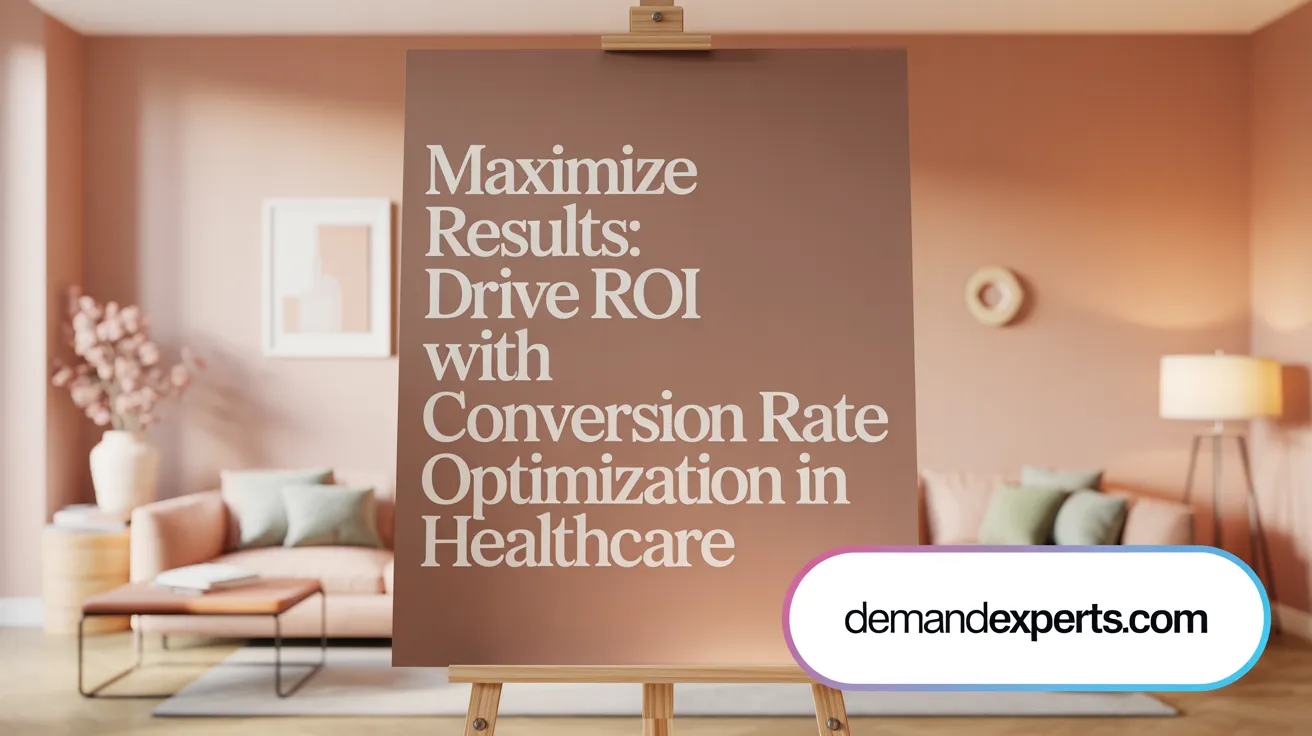
How can healthcare providers improve digital marketing ROI via conversion rate optimization?
Healthcare providers can significantly boost their digital marketing ROI through Conversion Rate Optimization (CRO), a systematic process of improving the percentage of website visitors who take desired actions.
CRO strategies start with user behavior analysis, utilizing healthcare website analytics and user research to identify barrier points and opportunities for enhancement. By setting clear and measurable Key Performance Indicators (KPIs) such as the number of appointment bookings, form submissions, or resource downloads, providers can monitor their progress effectively.
A primary technique in CRO is A/B testing, where different versions of site elements like navigation menus, content layouts, and call-to-action forms are tested against each other to determine which yields higher patient engagement and conversion rates.
Tailoring content to address the specific needs and pain points of patients ensures the material resonates and motivates action. This involves understanding local patient demographics and preferences to craft personalized and relevant messaging, which improves audience quality in healthcare marketing.
Crucially, CRO efforts in healthcare must comply with regulatory requirements such as HIPAA, protecting patient data and maintaining trust while optimizing digital experiences.
By continually refining user experiences through data-driven insights and regulatory adherence, healthcare organizations can achieve improved patient acquisition and long-term ROI.
The Role of Social Media and Content Marketing in Driving ROI
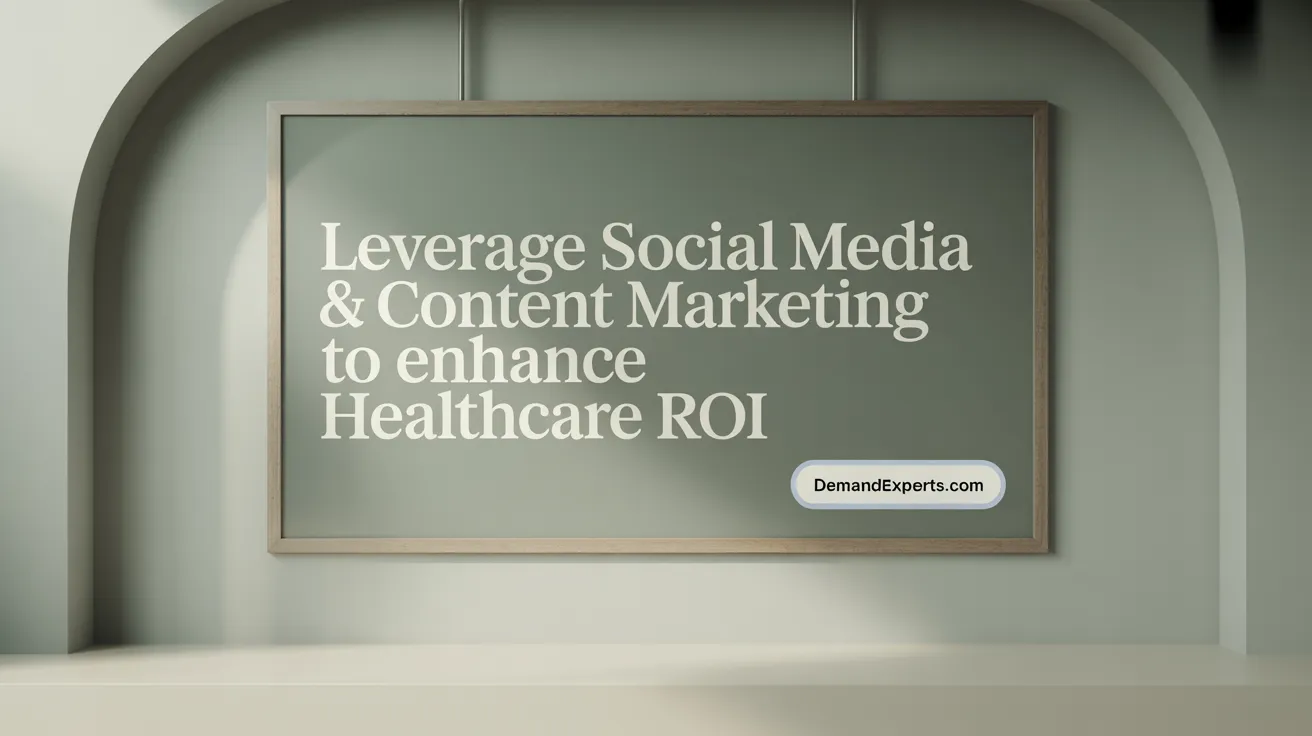
What is the impact of social media and content marketing on healthcare marketing ROI?
Social media plays a pivotal role in healthcare marketing, influencing approximately 57% of individuals when choosing a healthcare provider. This impact underscores its importance in driving patient acquisition and building brand trust. Engagement on social platforms—measured through likes, shares, comments, and clicks—serves as a strong indicator of campaign effectiveness and potential ROI.
How do engagement and conversion tracking support ROI measurement?
Tracking key metrics such as engagement rates and conversion rates, including appointment bookings initiated from social posts, allows healthcare marketers to measure the real-world impact of their digital efforts. These insights enable refinement of strategies to improve patient outreach and optimize marketing budgets.
Why is user-generated content valuable in healthcare marketing?
User-generated content like patient testimonials and behind-the-scenes stories fosters authentic connections and enhances credibility. Such content boosts patient trust and positively influences decision-making. The effectiveness of these materials can be quantified via social engagement and conversion metrics.
How effective is email marketing in healthcare and what role does segmentation play?
Email marketing remains highly effective, boasting an average open rate of 41% in healthcare. Its success is amplified through audience segmentation and personalization, which ensure that patients receive relevant and timely communications, thereby increasing engagement and conversion.
What metrics demonstrate content marketing ROI in healthcare?
Healthcare content marketing—through blogs, videos, and infographics—not only elevates brand authority but also promotes sustained patient engagement and website traffic. Content marketing ROI can be assessed using metrics such as page views, conversion events, and customer lifetime value, providing both immediate and long-term returns.
How do personalization and audience targeting enhance marketing results?
Personalized campaigns tailored by audience segmentation improve engagement and foster patient loyalty. Targeted messaging supports higher conversion rates and strengthens the overall marketing ROI by addressing specific patient needs and preferences.
Strategic Best Practices for Sustained ROI and Future Trends
Setting SMART goals for ROI measurement
To effectively measure ROI, healthcare marketers must establish SMART goals—specific, measurable, achievable, relevant, and time-bound. Setting clear objectives allows for precise tracking and evaluation of marketing campaigns, ensuring alignment with organizational priorities.
Long-term ROI tracking and analysis
Measuring ROI over extended periods, such as six months or more, provides a more accurate assessment of marketing impact. Long-term tracking accounts for the non-linear and multi-touch nature of patient journeys, offering insights into sustained outcomes rather than short-term gains.
Importance of patient experience and outcomes
Focusing on patient experience and health outcomes broadens the scope of ROI beyond mere financial metrics. Campaigns that improve patient satisfaction, engagement, and adherence to care contribute to long-lasting loyalty and organizational growth.
Balancing multi-channel marketing
Healthcare marketing often spans multiple channels, including digital, social media, email, and traditional platforms. Utilizing sophisticated multi-touch attribution models helps allocate budgets efficiently, attributing success accurately across various touchpoints.
Emerging technologies like AI and predictive analytics
AI-powered personalization and predictive analytics enable marketers to anticipate patient behaviors, tailor messaging, and optimize campaign timing and segmentation. These technologies enhance engagement and increase the likelihood of desired patient actions.
Ethical data usage and compliance
Maintaining HIPAA compliance and ethical handling of patient data is essential. Transparent and secure use of data fosters patient trust and supports sustainable marketing efforts while adhering to privacy regulations.
Conclusion: Building a Data-Driven Future for Healthcare Marketing ROI
Tracking ROI in digital marketing for healthcare providers is a multifaceted endeavor shaped by unique challenges such as patient data privacy, complex patient journeys, and multi-channel interactions. By focusing on critical metrics—including audience quality, lead progression, conversion rates, and acquisition costs—and leveraging advanced analytics tools and privacy-compliant data integration platforms, healthcare marketers can accurately attribute marketing outcomes and optimize campaigns. Conversion rate optimization and strategic use of social media and content marketing further enhance patient engagement and conversion efficacy. Embracing emerging technologies like AI and predictive analytics, combined with ethical data practices and clear goal-setting, prepares healthcare organizations to maximize ROI sustainably. Ultimately, these practices empower providers to align marketing investment with organizational objectives, improving patient outcomes and demonstrating the true value of digital marketing efforts.
Introduction to ROI in Healthcare Digital Marketing
In the ever-evolving healthcare landscape, digital marketing plays a pivotal role in reaching and engaging patients effectively. However, healthcare providers face unique challenges in measuring the return on investment (ROI) due to complex patient journeys, privacy regulations, and fragmented data systems. Understanding and tracking ROI is vital for healthcare marketers to optimize campaigns, justify budgets, and ultimately improve patient acquisition and outcomes. This article explores key metrics, tools, and strategies to accurately assess ROI in digital marketing for healthcare providers, enabling data-driven decision-making and enhanced marketing effectiveness.
Key Metrics for Measuring ROI in Healthcare Digital Marketing

What are the essential metrics for tracking ROI in healthcare digital marketing?
Tracking ROI in healthcare digital marketing relies on several critical metrics that together provide a comprehensive view of campaign effectiveness and profitability. First, audience quality assessment ensures that marketing campaigns target individuals most likely to engage meaningfully—potential patients or members who will take action on healthcare services.
Next, lead generation and funnel tracking monitor the volume of leads generated and their movement through various stages of the patient journey. This helps identify which channels are most productive for generating initial contacts and eventual conversions.
Conversion rate analysis measures the percentage of targeted patients who complete desired actions such as scheduling appointments or registering for webinars. Higher conversion rates directly indicate marketing success.
Breaking down acquisition costs (Cost Per Acquisition or CPA) by channel and campaign enables marketers to evaluate cost efficiency. Tools like healthcare CRM systems assist in attributing success accurately across complex, multi-channel patient journeys.
Monitoring consumer engagement indicators—including clicks, shares, comments, and phone calls—provides insight into how patients interact with marketing content. High engagement often correlates with better retention and increased lifetime patient value.
Contribution margin, calculated as revenue minus variable costs, reveals the profitability of marketing initiatives. This metric helps organizations decide which campaigns to continue or modify.
Lastly, understanding the payer mix is essential; campaigns focused on patients with commercial insurance typically realize higher ROI compared to those mainly serving Medicare or Medicaid populations due to reimbursement differences.
Together, these metrics form a robust framework for evaluating healthcare digital marketing performance and maximizing return on investment.
Data Integration and Overcoming Privacy Barriers in ROI Measurement

How do privacy regulations and data fragmentation affect ROI tracking in healthcare marketing?
Privacy regulations, particularly HIPAA and patient data privacy, pose significant challenges for healthcare marketing ROI measurement by restricting access to patient data. This regulation-induced limitation leads to fragmented data scattered across Electronic Health Records (EHRs), Customer Relationship Management (CRM) systems, and marketing platforms. Due to these silos, healthcare marketers lack a unified view of the patient journey, making it difficult to attribute marketing success accurately or calculate true return on investment.
Healthcare Privacy Platforms: Bridging Data Silos
To overcome data fragmentation and comply with privacy laws, healthcare organizations are adopting Healthcare Privacy Platforms. These specialized platforms securely collect, manage, and activate patient data without violating regulations. They facilitate the integration of disparate data sources by building secure bridges connecting EHRs, CRMs, and marketing tools.
This integrated data link enables marketers to track critical patient actions—such as 'appointment booked' and 'appointment held'—which are essential for calculating Customer Acquisition Cost (CAC) in healthcare accurately. Access to such down-funnel metrics ensures precise marketing attribution, allowing organizations to optimize spends and demonstrate measurable ROI.
Impact on Accurate CAC and ROI Attribution
By leveraging these advanced data integration solutions, healthcare marketers can shift from fragmented and incomplete campaign insights to comprehensive, data-driven decision-making. Accurate CAC measurement enhances resource allocation, informs service-line marketing strategies, and justifies budget requests with tangible evidence of marketing effectiveness. Consequently, these platforms not only enable compliance and privacy but also empower healthcare organizations to maximize the financial and strategic impact of their marketing investments.
Leveraging Analytics Tools and Technologies for Enhanced ROI Insights

What technologies and tools aid in measuring and optimizing healthcare marketing ROI?
Healthcare providers rely on a variety of analytics tools and technologies to accurately measure and optimize their marketing ROI. Common platforms include Google Analytics, HubSpot, and Salesforce, which track website traffic, form submissions, and user behavior to reveal how patients interact with digital campaigns.
Healthcare-specific CRM systems play a vital role by linking marketing efforts directly to patient data, helping attribute leads and conversions more effectively. These CRMs facilitate detailed tracking of marketing channels and enable segmentation for targeted outreach.
Using call tracking numbers and form tracking, providers can pinpoint the exact marketing channels responsible for generating phone inquiries and online leads that convert into appointments. This granular data supports informed budget allocation and campaign tuning.
The complexity of patient journeys often requires multi-touch attribution modeling, which captures multiple interactions across channels rather than just the first or last touchpoint. This comprehensive insight allows marketers to assess the real impact of each contact point on patient decisions.
Artificial Intelligence (AI) and automation technologies enhance ROI tracking by analyzing large datasets to identify high-impact touchpoints and enabling marketers to refine strategies in real-time. AI-driven personalization platforms tailor messaging to individual patient segments, improving engagement and conversion rates.
Finally, reporting dashboards are essential to consolidate data from multiple sources and present clear, actionable insights. These dashboards support alignment with executive leadership by demonstrating marketing performance and justifying investment decisions.
Together, these tools empower healthcare marketers to execute data-driven strategies, optimize patient acquisition, and improve overall marketing effectiveness.
Optimizing Digital Campaigns Through Conversion Rate Improvement

How can healthcare providers improve digital marketing ROI via conversion rate optimization?
Healthcare providers can significantly boost their digital marketing ROI through Conversion Rate Optimization (CRO), a systematic process of improving the percentage of website visitors who take desired actions.
CRO strategies start with user behavior analysis, utilizing healthcare website analytics and user research to identify barrier points and opportunities for enhancement. By setting clear and measurable Key Performance Indicators (KPIs) such as the number of appointment bookings, form submissions, or resource downloads, providers can monitor their progress effectively.
A primary technique in CRO is A/B testing, where different versions of site elements like navigation menus, content layouts, and call-to-action forms are tested against each other to determine which yields higher patient engagement and conversion rates.
Tailoring content to address the specific needs and pain points of patients ensures the material resonates and motivates action. This involves understanding local patient demographics and preferences to craft personalized and relevant messaging, which improves audience quality in healthcare marketing.
Crucially, CRO efforts in healthcare must comply with regulatory requirements such as HIPAA, protecting patient data and maintaining trust while optimizing digital experiences.
By continually refining user experiences through data-driven insights and regulatory adherence, healthcare organizations can achieve improved patient acquisition and long-term ROI.
The Role of Social Media and Content Marketing in Driving ROI

What is the impact of social media and content marketing on healthcare marketing ROI?
Social media plays a pivotal role in healthcare marketing, influencing approximately 57% of individuals when choosing a healthcare provider. This impact underscores its importance in driving patient acquisition and building brand trust. Engagement on social platforms—measured through likes, shares, comments, and clicks—serves as a strong indicator of campaign effectiveness and potential ROI.
How do engagement and conversion tracking support ROI measurement?
Tracking key metrics such as engagement rates and conversion rates, including appointment bookings initiated from social posts, allows healthcare marketers to measure the real-world impact of their digital efforts. These insights enable refinement of strategies to improve patient outreach and optimize marketing budgets.
Why is user-generated content valuable in healthcare marketing?
User-generated content like patient testimonials and behind-the-scenes stories fosters authentic connections and enhances credibility. Such content boosts patient trust and positively influences decision-making. The effectiveness of these materials can be quantified via social engagement and conversion metrics.
How effective is email marketing in healthcare and what role does segmentation play?
Email marketing remains highly effective, boasting an average open rate of 41% in healthcare. Its success is amplified through audience segmentation and personalization, which ensure that patients receive relevant and timely communications, thereby increasing engagement and conversion.
What metrics demonstrate content marketing ROI in healthcare?
Healthcare content marketing—through blogs, videos, and infographics—not only elevates brand authority but also promotes sustained patient engagement and website traffic. Content marketing ROI can be assessed using metrics such as page views, conversion events, and customer lifetime value, providing both immediate and long-term returns.
How do personalization and audience targeting enhance marketing results?
Personalized campaigns tailored by audience segmentation improve engagement and foster patient loyalty. Targeted messaging supports higher conversion rates and strengthens the overall marketing ROI by addressing specific patient needs and preferences.
Strategic Best Practices for Sustained ROI and Future Trends
Setting SMART goals for ROI measurement
To effectively measure ROI, healthcare marketers must establish SMART goals—specific, measurable, achievable, relevant, and time-bound. Setting clear objectives allows for precise tracking and evaluation of marketing campaigns, ensuring alignment with organizational priorities.
Long-term ROI tracking and analysis
Measuring ROI over extended periods, such as six months or more, provides a more accurate assessment of marketing impact. Long-term tracking accounts for the non-linear and multi-touch nature of patient journeys, offering insights into sustained outcomes rather than short-term gains.
Importance of patient experience and outcomes
Focusing on patient experience and health outcomes broadens the scope of ROI beyond mere financial metrics. Campaigns that improve patient satisfaction, engagement, and adherence to care contribute to long-lasting loyalty and organizational growth.
Balancing multi-channel marketing
Healthcare marketing often spans multiple channels, including digital, social media, email, and traditional platforms. Utilizing sophisticated multi-touch attribution models helps allocate budgets efficiently, attributing success accurately across various touchpoints.
Emerging technologies like AI and predictive analytics
AI-powered personalization and predictive analytics enable marketers to anticipate patient behaviors, tailor messaging, and optimize campaign timing and segmentation. These technologies enhance engagement and increase the likelihood of desired patient actions.
Ethical data usage and compliance
Maintaining HIPAA compliance and ethical handling of patient data is essential. Transparent and secure use of data fosters patient trust and supports sustainable marketing efforts while adhering to privacy regulations.
Conclusion: Building a Data-Driven Future for Healthcare Marketing ROI
Tracking ROI in digital marketing for healthcare providers is a multifaceted endeavor shaped by unique challenges such as patient data privacy, complex patient journeys, and multi-channel interactions. By focusing on critical metrics—including audience quality, lead progression, conversion rates, and acquisition costs—and leveraging advanced analytics tools and privacy-compliant data integration platforms, healthcare marketers can accurately attribute marketing outcomes and optimize campaigns. Conversion rate optimization and strategic use of social media and content marketing further enhance patient engagement and conversion efficacy. Embracing emerging technologies like AI and predictive analytics, combined with ethical data practices and clear goal-setting, prepares healthcare organizations to maximize ROI sustainably. Ultimately, these practices empower providers to align marketing investment with organizational objectives, improving patient outcomes and demonstrating the true value of digital marketing efforts.




